What with all the Sinclairian revelations about modern agri-monopolies, beef of ill health jacked-up on antibiotics and hormones, and chemically bathed hamburger, I’m kinda getting scared of my food.
That’s not good.
I don’t care if it’s science or standard business practice today. I agree with Anthony Bourdain. Hamburger should not have to be disinfected with ammonia!
I refuse to join the bandwagon and treat eggs and pork like poison.
I should not fear what I eat.
What can we do about it?
I say go back to the not-so-old ways. If we eat meat, let’s get it from reputable sources. Let’s know where our beef comes from.
When I was a kid in Oregon, my parents bought their beef from the local butcher. Who got it from local farmers. Who raised and pastured their cattle naturally. No hormones were needed. No antibiotics.
It wasn’t a pretentious food trend back then. It was what was done. Sure, it was old-fashioned, but it was economical. We bought a side of beef and the butcher cut and packed it to our specs. And if you didn’t have a large freezer of your own, he even offered lockers for rent there, where you could store your beef. I remember our weekly shopping trips: making a stop at the drive-through dairy, then off to the locker to pick up some meat for the week.
With all the pre-packaged meat and butcherless meat counters at our local groceries, independent butchershops and meathouses have become a thing of the past. Or hard to find. Some, if most, have never even stepped foot on a farm. Our food comes “wrapped in plastic”
… and that’s all we know (or care to know).
But it’s worth the effort. You can do it. But how?
Buy Locally Sourced Beef and Vegetables
If you eat beef, find a reputable, local source. (And if not, find a reputable, local source for your veggies!) Make sure they do things right. Go to the fair and buy a cow from a 4-H family. Search your local farmers markets. Ask your local farm-to-table restaurant(s) where they get their beef.
In my case, finding a local source was easy. A neighbor’s godfather Nate has a farm (the Happy Tummy Farm) in Alpine, California and raises cattle, goats, pigs and chickens. I’ve visited and checked it out.
Find a Reputable Butcher
So Hanis and I split a side of beef from the farm: a pastured Black Angus, which was finished its last month on corn. It was processed on the farm, then dry aged for about a month and butchered at Scott’s Custom Meats (240A East 4th Street, in Perris, California, just about an hour from where I live).
They’ve been in business for over thirty years. The butchers there are approachable, professional, and informative. They’ll cut the meat to your exact specs.
Now in the past, I’ve had pork butchered in a suspect manner. When I got the cuts, there was no belly, loin, nor butt meat. Where did it go? Hmmm…
Hauling it out. The beef was quartered and dry aged for nearly a month. We bought a half together.
The aged beef smelled musty, like a good cured ham…
It took two butchers and a packer an hour and fifteen minutes to break down the beef and wrap the cuts for us.
Dennie at Scott’s Custom Meats enlightened us on some questionable industry practices he’s heard about. Unscrupulous butchers may have retail counters where your best cuts will end up, to be sold at a high profit — to the butcher. They’ll do this knowing — or thinking — that their city folk customers are oblivious to what they’re buying. Unfortunately, in most cases, they’re right.
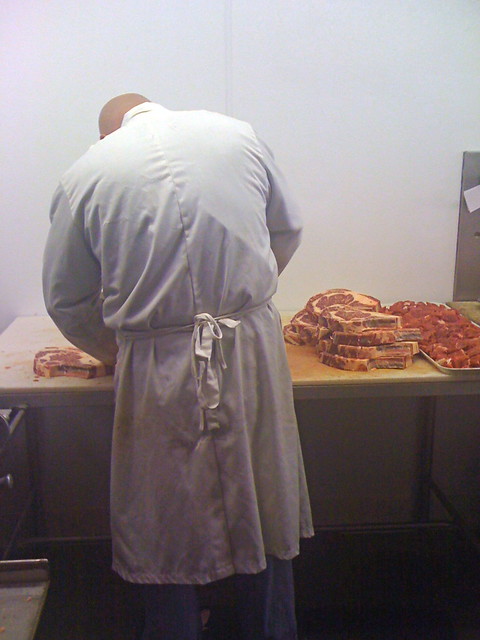
Cutting and trimming the steaks.
Go to a custom butchershop, where retail sales don’t get introduced. Where they provide a service only. It’s their business, and they’ll be proud of the quality of service they provide.
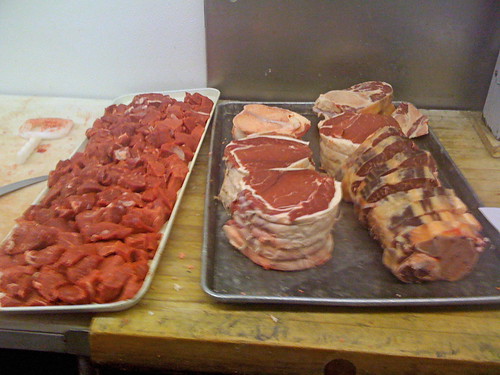
Some of the steaks, roasts, and bones for stock, too!
As the side was butchered, the scraps were trimmed a bit and accumulated on the bed of this commercial meat grinder…
They ran it through once while we were there, and put it in the walk-in to chill. Friction heats up the meat when it’s ground, so after it’s cold, they’ll run it through a second time to better distribute the fat…
If you do get a butcher, make sure to get a cut sheet, or inventory, of the cuts you’re paying for. If they don’t provide you with one, or object to it — beware. Don’t trust ’em. Open up a package and check out the meat. If some looks fresh and some looks grey or dried out, chances are your butcher may have swapped out your fresh meat with some unsold cuts from his retail counter!
Stamps at the meat packer’s station. She packaged it up as fast as they could cut it. I asked if anyone ever came in and re-arranged her stamps, just to mess with her. She said only if the butchers tried to package it themselves. “They never put ’em back in the right place!”
After all was said and done, we ended up with about 400 pounds of beef. That’s a lotta packages!
Now I have a freezer full of beef, I think it’s time to do BEEF, Elements of Root Beer…

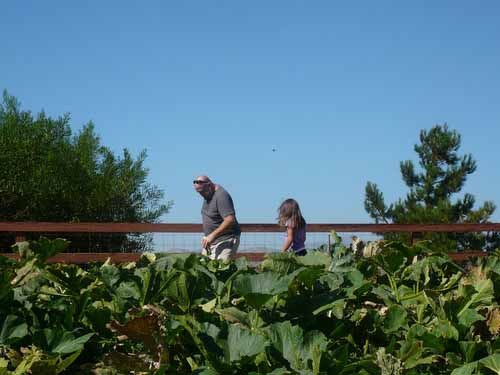

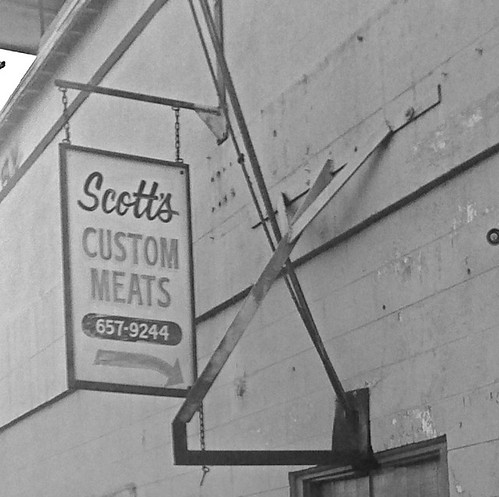
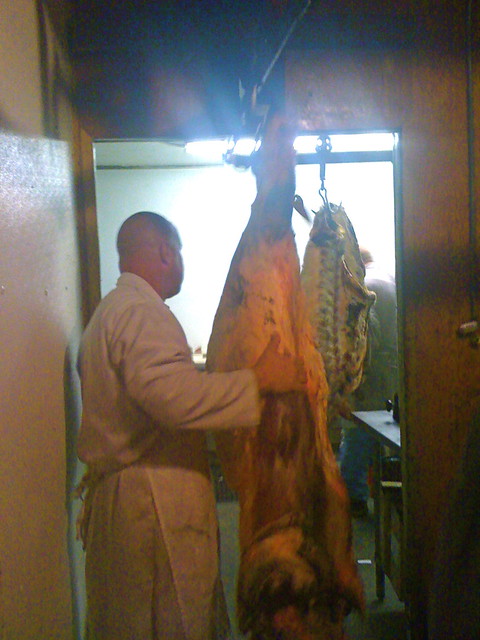

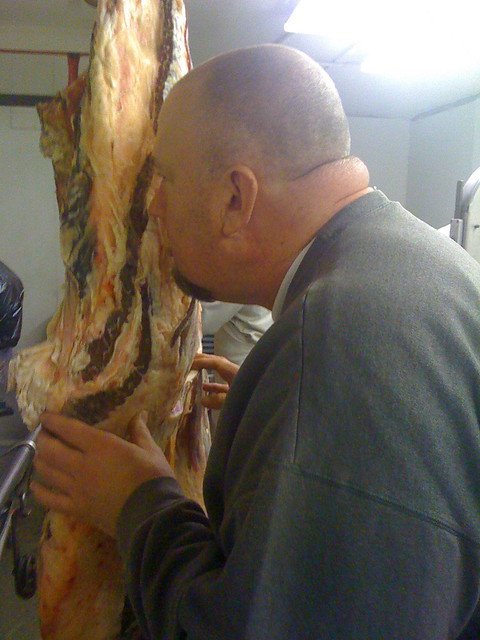
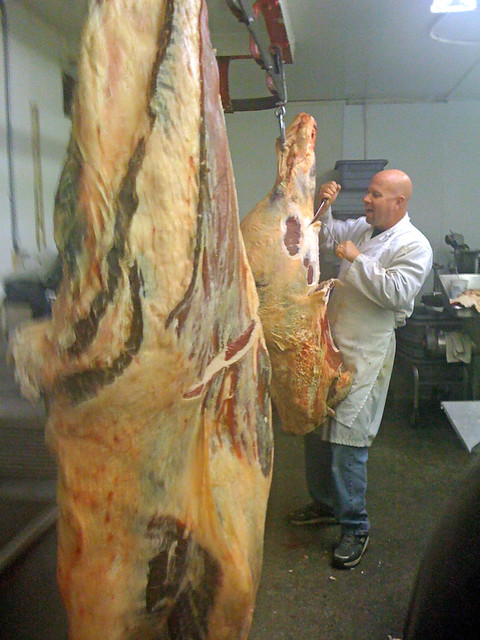
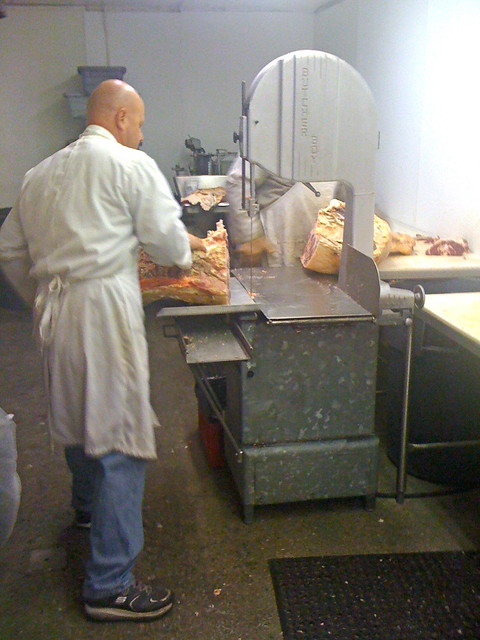

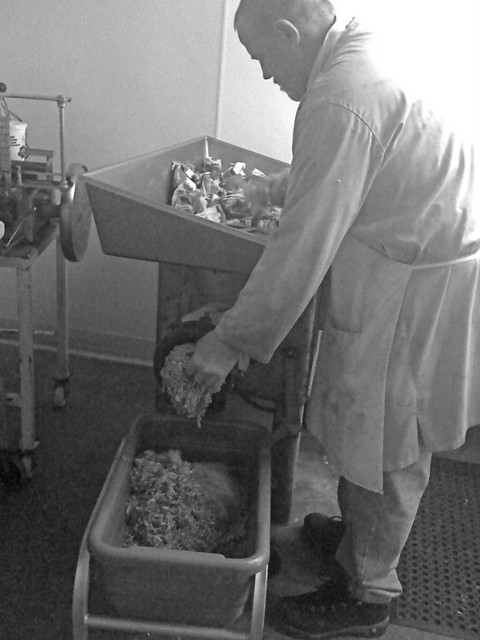
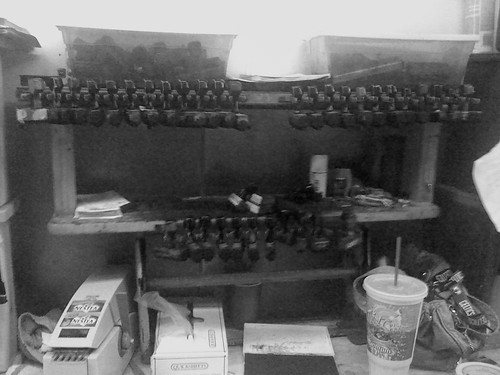
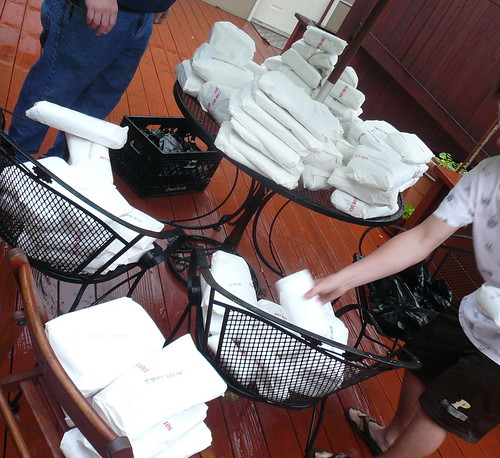
2 Responses to Do you know where your beef comes from?